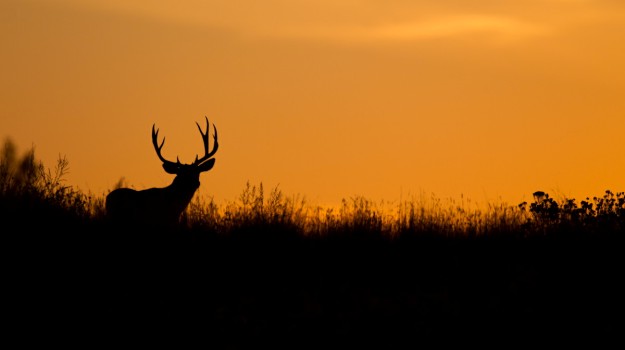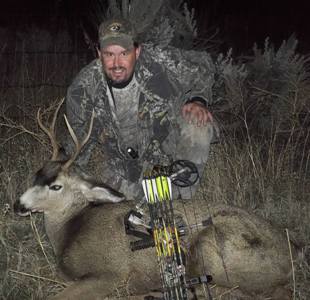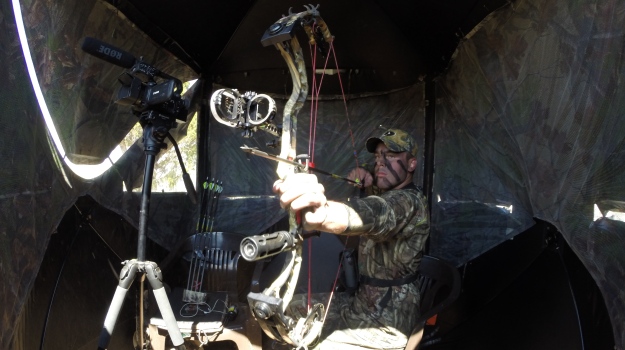Scott McGann Tells the Secrets of a Middle Ground Public Land Elk Hunter

Editor’s Note: Scott McGann from Emmett, Idaho, is part of the Mossy Oak Western States’ Big Game Pro Staff. “My wife, Kami, and I are both on the Mossy Oak Big Game Pro Staff and have been for 9 years,” McGann says. “At the beginning of elk season, I do the calling, and Kami does the shooting. Once Kami fills her elk tag, I get to hunt.” Together this team has taken 17 elk. Kami has been bowhunting for 8 years and has harvested four elk. Scott has been hunting 25 years and has harvested 13 bulls.
I take elk in plain sight on public lands and here’s how you can too. Every now and then I put one of my favorite sayings on Facebook like, “Hunt smart and not hard for elk.” I spend a lot of time learning how to talk to elk, what to say to them and when to talk to them. I've taken a good number of elk within sight of main roads. I like to let most of the elk hunters get into the woods ahead of me. I allow them to walk past the bulls that I take. I have several friends who are die-hard, back-country hunters. These hunters will hike in several miles from a main road and live in a tent for 3-4 days in the back country. These hunters are often so busy looking at their hand-held GPS receivers and trying to get to spots they want to hunt that they may walk right past some prime elk hunting.
I don’t want anyone to confuse me with someone who thinks he knows everything about elk hunting. The way I've learned the tactics I use is by making mistakes when I've been out elk hunting and trying to learn from those mistakes. Many mornings I've hiked into the back country 2-3 miles, sat on a rock and said to myself, “I think a good many elk probably are between me and the road I just left.” So, I started hunting on roads and finding elk wallows 500-600 yards off the main roads. I also noticed that no one else seemed to be hunting those wallows.
Out here in Idaho, we have three types of elk hunters:
- the road hunters who don’t get 100 or 200 yards off the road;
- the back-country hard-hunting guys who will go 10 or more miles away from the main road before they even start hunting; and
- guys like me - the middle grounders -who hunt within a mile or 2 miles of the road.
 I think those middle-ground hunters represent the smallest group of elk hunters who hunt public lands. One of the big advantages of hunting the middle ground is that we can harvest, butcher and get an elk out the same day we shoot him. We don’t have to stay up until midnight or spend 2 days getting our elk back to a truck that’s 10- to 12-miles away. Initially, I was one of those long-range hunters who walked 10 to 12 miles in before I started to hunt. But one time on the last day of a hunt, when my hunt was basically over, I realized I was seeing and hearing elk when I was walking back to my truck. Also, I started seeing elk tracks in my tracks that I had made when I left the truck.
I think those middle-ground hunters represent the smallest group of elk hunters who hunt public lands. One of the big advantages of hunting the middle ground is that we can harvest, butcher and get an elk out the same day we shoot him. We don’t have to stay up until midnight or spend 2 days getting our elk back to a truck that’s 10- to 12-miles away. Initially, I was one of those long-range hunters who walked 10 to 12 miles in before I started to hunt. But one time on the last day of a hunt, when my hunt was basically over, I realized I was seeing and hearing elk when I was walking back to my truck. Also, I started seeing elk tracks in my tracks that I had made when I left the truck.
Over the last several years, since I've been on the Mossy Oak Pro Staff, I've bought several Covert trail cameras. I start putting those trail cameras up about the end of June, and I leave them up all summer long. About a week or two before elk season arrives, I check my trail cameras to see if any elk are in the areas where I’ve put out the cameras. If I'm getting pictures of elk around one of my camera locations, I feel pretty confident I can call in a bull there.
When people ask me about my trail cameras, the number-one question usually is: “How do you keep people from stealing your trail cameras?” I never put locks on my trail cameras, and I haven’t had any stolen. I place my cameras where they're not obvious and try to hide my cameras at the places where I set them up. Sometimes hunters are putting trail cameras on wallows – placing that camera right near the wallow. But I put my trail camera about 100 yards back from the wallow on a well-used trail and tilt the camera. Then I’ll take pictures of the elk as they walk down the trail. I don’t set-up my cameras to take perfect pictures. I just want my cameras to show me that an elk has walked down that trail. Usually, I locate my cameras about 5-6 feet high, and I also make sure that a hunter walking up or down that elk trail can’t see the camera. I try to hang them just above a hunter’s line of sight. I usually put out three cameras on three well-used trails, about 10-miles apart.
To learn more about hunting, check out John E. Phillips’ new eBook and print book, “Bowhunting Deer: Mossy Oak Pros Know Bucks and Bows.” You also can download a free Kindle app that enables you to read the book on your iPad, computer or Smartphone.
For information on making jerky from your deer to provide a protein-rich snack and recipes for cooking elk and mule deer, you can download free books from http://johninthewild.com/free-books.
Tomorrow: Taking the Biggest Bull Elk of Scott McGann’s Life 1-1/2-Miles from His Truck






























